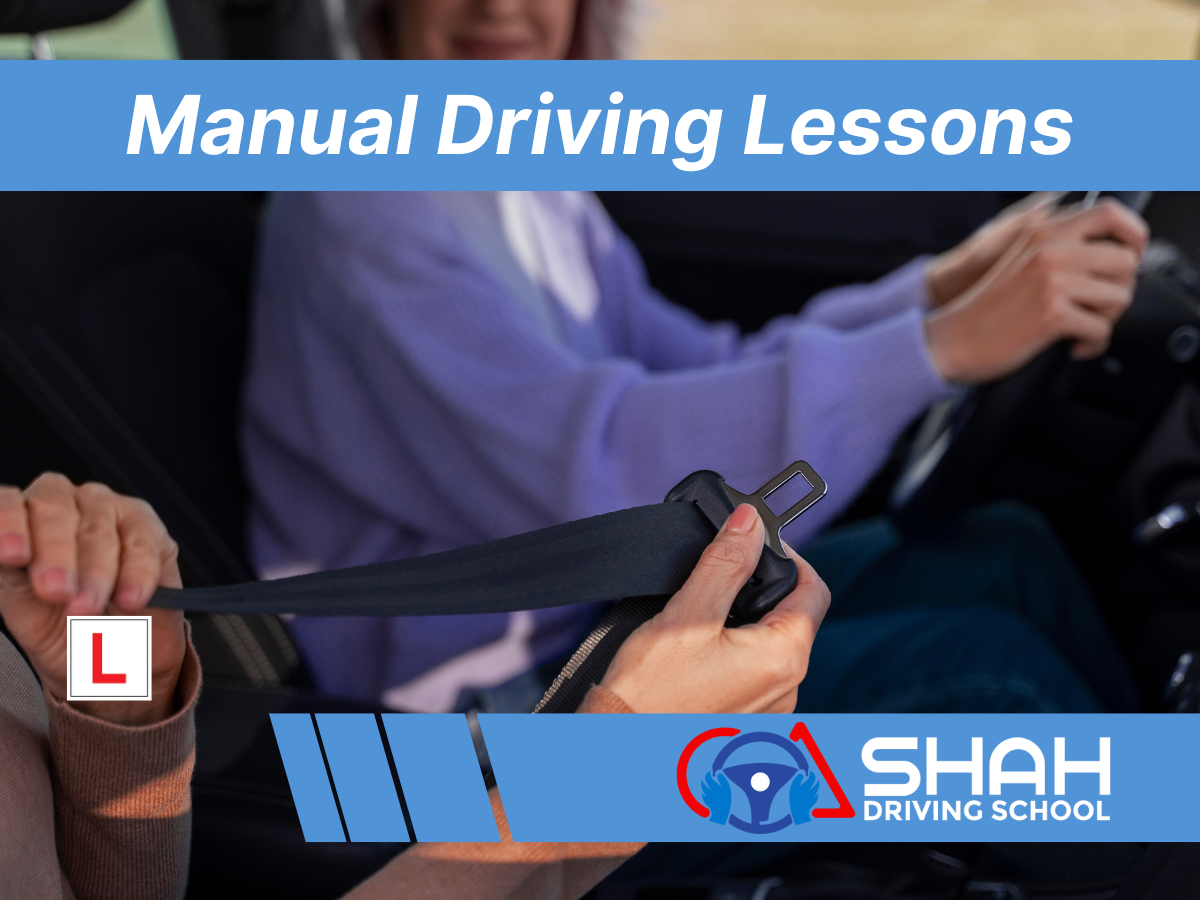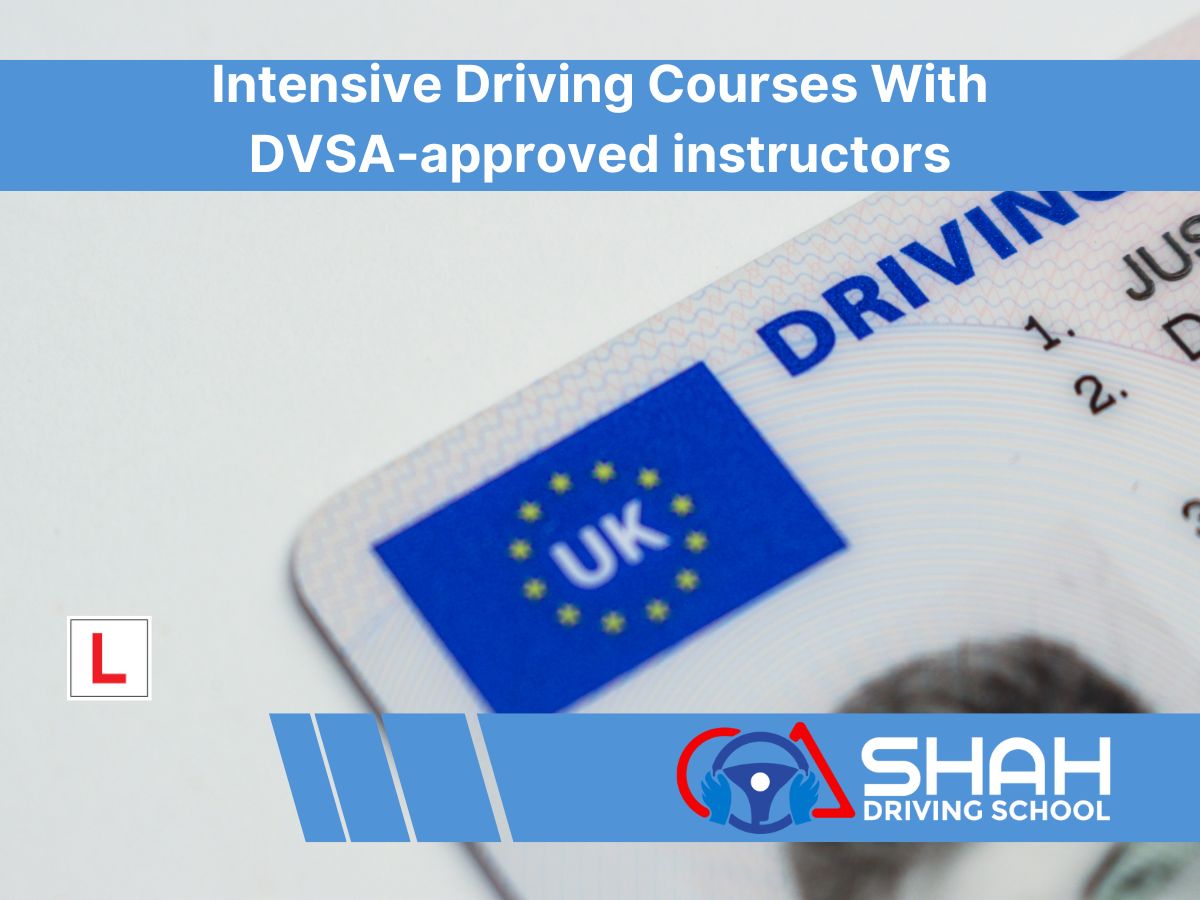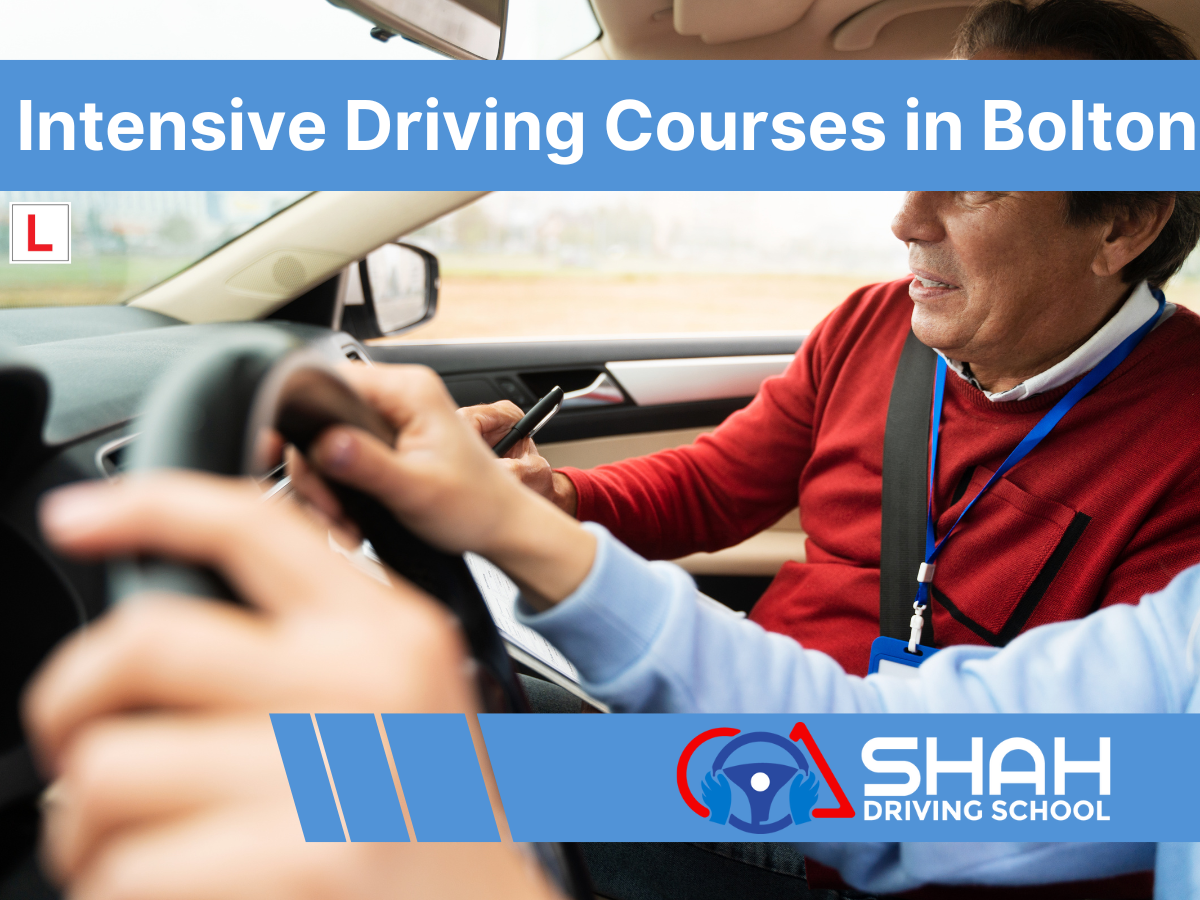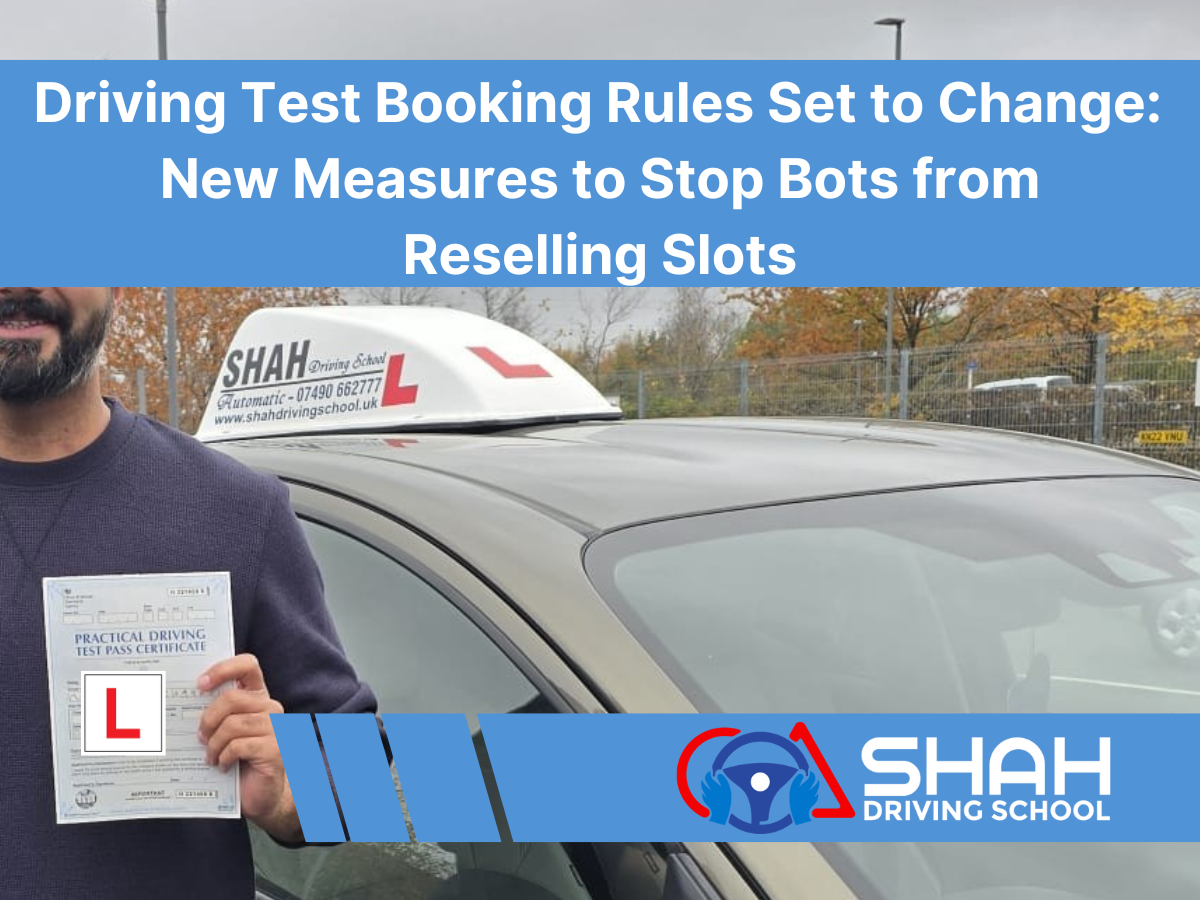
How to Pass the UK Driving Test on Your First Try
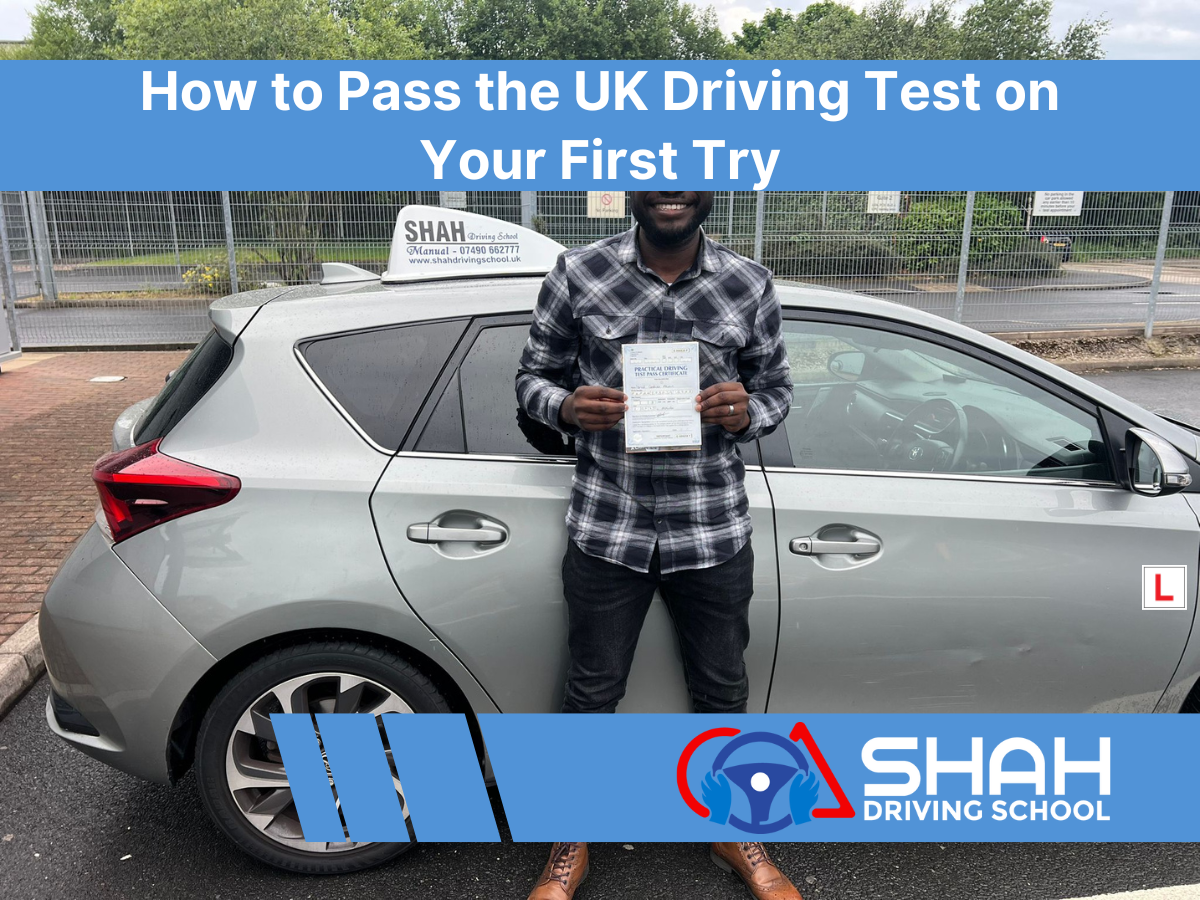
Getting your full driving licence is a major milestone — it’s freedom, mobility, and a lifelong skill. But for many learner drivers, passing the UK driving test can feel like a huge hurdle. At Shah Driving School, we’ve worked with hundreds of students in Bolton and the wider UK region, and we know what makes the difference between passing early — or having to retake.
In this guide, we’ll cover everything you need: what the driving test involves, common mistakes, tips most learners overlook, and how Shah Driving School supports you to succeed. Let’s dive in.
1. Understanding the UK Driving Test — What You’re Really Being Assessed On
Before preparing strategies, it’s vital to fully grasp what examiners look for and how the test is structured.
a) Structure of the Practical Driving Test
The practical test typically includes:
- Eyesight check: reading a number plate from 20 meters.
- ‘Show Me, Tell Me’ vehicle safety questions: you’ll be asked one “show me” while driving and one “tell me” before moving off.
- General driving ability: your competence in road positioning, speed, observation, anticipation, lane discipline.
- Controlled manoeuvres: e.g. reversing around a corner, parallel parking, bay parking, forward into a parking bay, or pulling up on the right.
- Independent driving: lasting around 10 minutes, following directions from a satnav or traffic signs.
- Test duration: typically around 40 minutes.
Examiners mark faults as either minor, serious, or dangerous. You can accumulate up to 15 minor faults and still pass, but any serious or dangerous fault is a fail.
b) What Examiners Are Looking For
-
Consistency and control: Smooth control of the vehicle (steering, acceleration, braking) is crucial.
-
Observation and awareness: Frequent use of mirrors, checking blind spots, scanning ahead.
-
Decision-making: Choosing safe gaps, overtaking only when safe, reacting appropriately to changing road conditions.
-
Signals and communication: Clear, timely signals to communicate intentions.
-
Planning and anticipation: Spotting hazards early and adjusting speed or position accordingly.
-
Safe manoeuvres: Demonstrating control and awareness during parking or reversing tasks.
Understanding these expectations helps you tailor your practice.
2. Why So Many Learners Fail — Common Mistakes to Avoid
Even with adequate lessons, many learners fail due to recurring pitfalls. Let’s uncover these and how you can avoid them.
| Mistake | Why It Happens | How to Avoid It |
|---|---|---|
| Hesitation or lack of decisiveness | Fear of making mistakes leads to being overcautious | Practice regularly, develop confidence with your instructor, plan in advance |
| Poor observation or mirror use | Not checking mirrors often or blind spots | Make mirror checks part of your “routine” at every stage |
| Incomplete stops or rolling stops | Trying to be efficient but cutting corners | Be disciplined — come to full stops where required |
| Overuse or misuse of signals | Signaling too early or too late, or not canceling signals | Practice deliberate, correct signal timing |
| Excess speed or slow responses | Nervousness or overthinking | Maintain calm, anticipate hazards early |
| Inconsistency under pressure | Performance drops under test stress | Simulate test conditions in practice sessions |
| Panicking during the independent drive section | Losing direction or missing turns | Practice following satnav instructions and reading signs |
| Poor reverse/parking technique | Insufficient practice or unclear method | Drill those manoeuvres repeatedly in low-pressure settings |
| Forgetting ‘Show Me, Tell Me’ answers | Stress or lack of preparation | Memorise and practice all likely questions beforehand |
By proactively addressing these, you greatly increase your chances of passing first time.
3. How Many Lessons Do You Actually Need?
There is no one-size-fits-all number. The Driver and Vehicle Standards Agency (DVSA) estimates that learners typically require around 45 hours of professional instruction and 20 hours of private practice. The Guardian+1
However, several factors influence this:
-
Your learning pace and confidence
-
Prior experience (if you’ve driven informally)
-
How quickly you adapt to different road conditions (e.g. busy urban, roundabouts, dual carriageways)
-
The quality and intensity of your lessons
At Shah Driving School, we tailor lesson plans to match your progress. Some learners take more time; some move faster. The key is quality over quantity.
4. Top 10 Pro Tips to Help You Pass on Your First Attempt
These are strategic, often-overlooked tips that can make the difference.
-
Start with a trial assessment lesson
Have your instructor assess your strengths and weaknesses. This gives a structured plan. -
Break lessons into themed blocks
For example: one session focused solely on roundabouts, another on dual carriageways, etc. -
Simulate test conditions
Occasionally do a “mock test” with your instructor under exam timing and route constraints. -
Build a strong “fault review habit”
After each lesson, note which errors you made and consciously correct them next time. -
Practice “real world” driving outside the test routes
Exposure to different road types is invaluable (e.g. rural roads, minor lanes, busy city). -
Master the independent drive section
Practice following satnav instructions and road signs while focusing on correct observation. -
Drill your manoeuvres till second nature
Repetition under low pressure helps you perform smoothly on test day. -
Have dry runs for test day tasks
E.g. arriving at the test centre, checking documents, performing the “show me, tell me” routine. -
Work on nerves, not just driving skills
Deep breathing, visualization techniques, and positive mindset help manage stress. -
Stay well-rested and alert before your test
Avoid last-minute cramming; a clear, calm mind outperforms overthinking.
5. How Shah Driving School Helps You Succeed
At Shah Driving School in Bolton, we’ve embedded support features and advantages to maximize your chance of passing:
-
DVSA-approved instructors: All our instructors meet DVSA standards, ensuring up-to-date knowledge of the test. shahdrivingschool.uk
-
Tailored lesson programs: Whether you’re a complete beginner or nearing test readiness, we adapt lesson pacing and content.
-
Automatic & manual courses: We offer both, so you can choose what fits you best. shahdrivingschool.uk
-
Intensive courses: For learners who prefer an accelerated path, we provide crash/intensive courses. shahdrivingschool.uk
-
Female instructors available: For learners who prefer, female instructors are part of our team. shahdrivingschool.uk
-
Local route knowledge: Our instructors are familiar with Bolton and surrounding areas, including common test routes and local traffic patterns.
-
No hidden costs: Transparent pricing and no surprise extras. shahdrivingschool.uk
-
Support throughout: From booking your test, planning your journey to the test center, to psychological preparation — we guide you every step.
6. What to Expect on Test Day & Final Checklist
Arriving on test day with confidence requires some logistics and preparation. Here’s your checklist:
A) Before You Leave Home
- Get plenty of rest and eat a good breakfast
- Re-check all documentation (provisional licence, theory test pass, appointment confirmation)
- Check the car (fuel, tyre condition, mirrors, lights)
- Don’t rush — give yourself time to arrive early
B) At the Test Centre
-
Arrive ~10–15 minutes early
-
Warm up: do a quick “cockpit drill” and visual checks
-
Keep calm: use breathing techniques if nerves kick in
C) During the Test
-
Start with confident observation checks
-
Use “MSM” / “POM” / other routines you’ve practiced (Mirror – Signal – Maneuver, etc.)
-
If you make a minor error, don’t let it spiral — recover calmly
-
On independent drive: trust your judgment and direction-following skills
-
Always mirror-check before manoeuvres, lane changes, and after actions
-
After the route ends, don’t relax too early — maintain focus until the examiner indicates the test is over
D) After the Test
-
Get feedback from your examiner — every bit of insight helps
-
If you pass: celebrate, but don’t be complacent
-
If not: review the faults, ask your instructor to plan targeted lessons, and retake confidently
7. Extra Advice & Myths Busted
Myth: You need 50 lessons minimum
Reality: Some learners pass with fewer; what matters is how effective each session is, and how you practice outside lessons.
Myth: If you make one small fault, you’ll fail
Reality: You are allowed up to 15 minor faults. Only serious or dangerous faults lead to failure.
Myth: The examiners deliberately try to fail you
Reality: Examiners are trained to assess safely. They aren’t adversarial; they want safe drivers too.
Advice: Use downtime productively
When not in a lesson, read the Highway Code, watch instructional videos, mentally rehearse hazard perceptions.
Stay updated on test slot changes
There are currently efforts to reduce waiting times for driving tests by increasing slot availability. The Guardian+1 Keep checking DVSA and local centres for cancellations or new slots.
8. Recap & Your Personalized Plan
Passing the UK driving test on your first attempt is absolutely achievable — with the right preparation, attitude, and guidance. Here’s your path:
-
Understand what examiners look for
-
Identify and correct common errors early
-
Accumulate quality practice, both in and out of lessons
-
Use mock tests and structured feedback
-
Take advantage of Shah Driving School’s tailored support
-
Approach test day with calm, confidence, and preparation.

